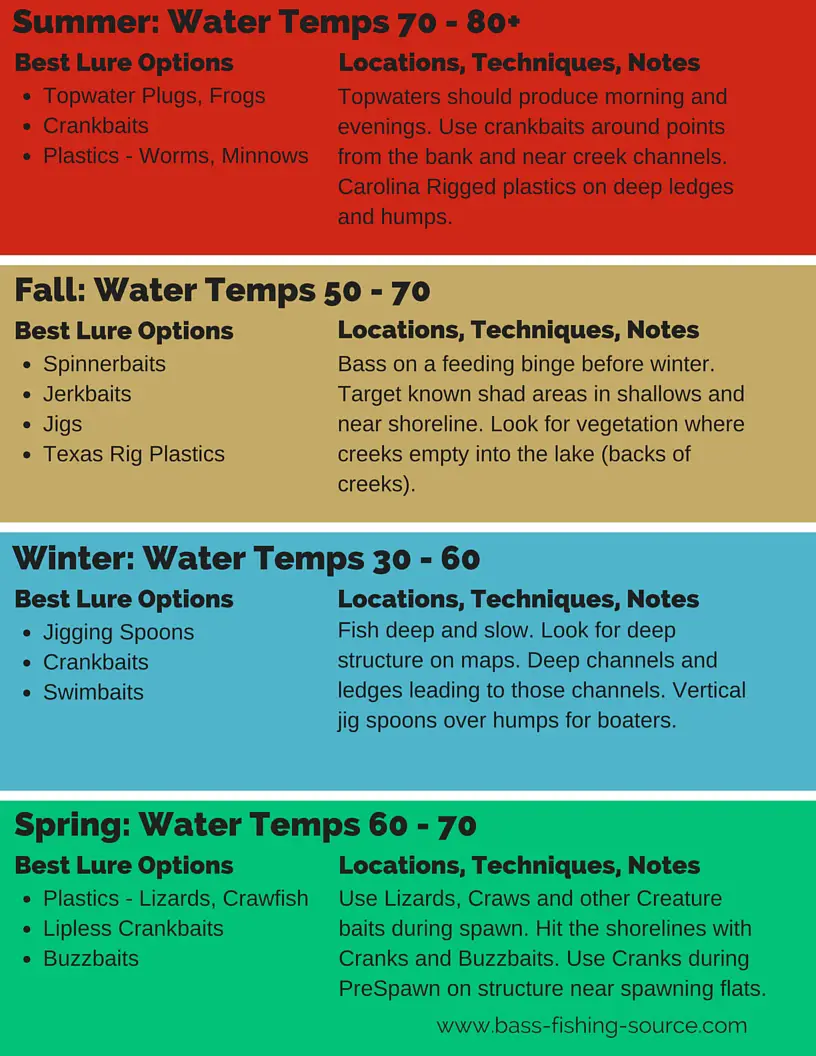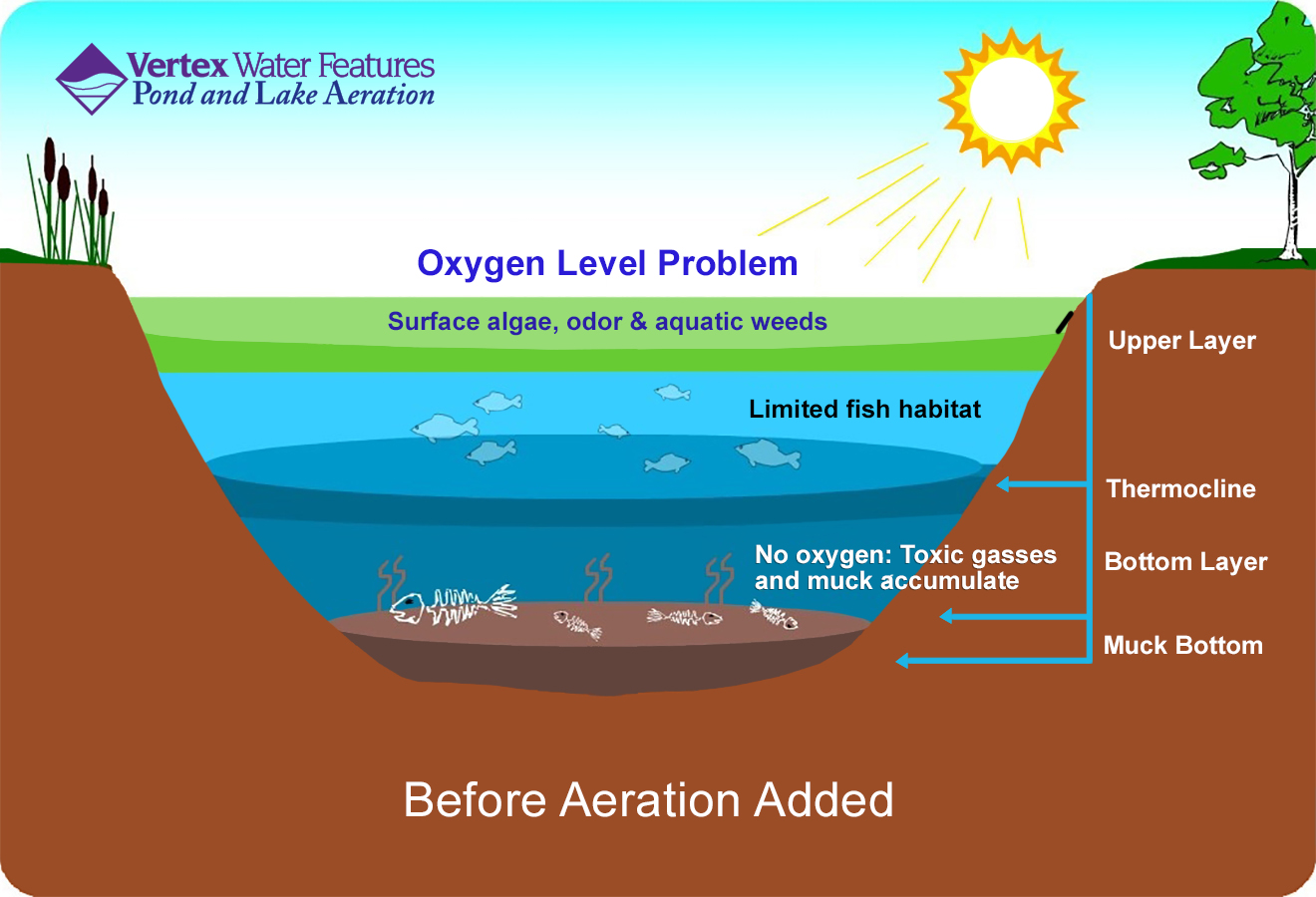Largemouth and smallmouth bass fishing might just be the most popular freshwater sport fish in the country with most seasons during the year open for anglers to get out on a lake or streams until surface water freezes in February or boils in August temperatures with each month and season using specific gear and strategies. How do you catch largemouth & smallmouth bass in the Fall?
You can Catch bass in the Fall if you:
- Understand the fall season transition period
- Identify baitfish & use a similar bait
- Look for grass that’s still green
- Cast baits on top of grass flats
- Find offshore structures/covers
- Find pockets
- Find cutouts on shorelines
- Use the right lure & location for temperature
A largemouth and smallmouth bass’s daily, weekly, and seasonal movements are all influenced by Water temperature, spawning aspirations, and the need to obtain food while avoiding predators. Understanding these elements and how they influence bass migrations can make you successful.
Fall Bass Fishing
Fall bass has one objective in the autumn season and that is to get ready for winter. Bass will key in on the bait fish. So the biggest tip for fall bass fishing is to find the bait fish they are looking for. Fall bass will move into shallow water, pushing baitfish into pockets in the water. Look for those pockets on the inside turns of a point. Once the baitfish are trapped in the pockets, largemouth bass will look to take bait fish there.
One way to find the baitfish is to visually look for them. Look for water birds or seagulls diving down or just hovering in an area on the surface of the water which may indicate that they are seeing baitfish. The bigger birds that hang off the side of the water’s shoreline like egrets are also an indication that they have found baitfish. This may be a great place to start fishing.
A shallow water pocket with large grass flats is fantastic for fall bass fishing. Try fishing a 3/16 tube in the grass by casting it just over the top of the grass and letting it fall. This lure can excite a big bass and entice the most finicky one. Making a cast on grass and starting your retrieve right away with an occasional jerking action is the best way to use these.
If the bite turns out to be smaller size bass, the bigger boys may be a little deeper. Tube baits can be fished Texas or Carolina rigged and even a Drop Shot bait on the end of a split shot rig as a flipped, pitches, or skipping lure.
When fishing in mid-depth areas, jerk bait or crankbait in constant motion will likely work. Try to cover a lot of water but keep your presentation neat and attractive it counts! Use a swimbait when going after big bass, and be sure to present with the right head.
Best Fall Bass Lures
- Lipless Crankbaits: In the fall, when bass congregates around schools using a bluegill mimic in smaller bodies of water along with crankbaits is the best option for fishing. Find an area with a lot of covers near flowing water, such as a river or stream. You can kill fish with a lipless crankbait in this area all day long.
- Spinnerbaits-If presentation is ruined because your crankbaits are dipped too low for shallow water. An effective spinnerbait presentation is one that keeps you on top of the school. Single silver for cloudy water and double silver for clear water.
- Buzzbaits and Topwater Walkers: throw on a medium-heavy rod and if you come across a school of fish, a buzz bait is always a good bet. Using a jerk or spinner initially, and then switching to a buzzer after you’ve found the school, is the best way to get the students excited.
- Rubber Worms: In situations when we have to deal with a lot of covers, turn to worms. You may want to change the size and color of the lure or change the time of day if the bass isn’t taking any of your other bait. If you must fish late at night, use rubber worms and stay close to cover.
- Swimbaits: These are great for big bass in deep waters. Swimbaits are tricky to fish with, but they can be lethal if you know how to master them, so be sure to get advice first.
- Super Spook Juniors-throw this walking bait on a medium fast action rod using monofilament or braided line because it floats.
Bass Seasonal Patterns
In the springtime, largemouth bass will leave the depths of the water body going into shallow coves, flats, and around points. Bass migrates from deeper water to cooler water columns and depths during the summer heat.
Once the grass dies off from colder weather bass will migrate and make their way to hang around on wood or rocks offshore structures and covers. First, look for grass that’s still green because bass tends to head there if you can’t find it then look for structure.
When the days get shorter and the water becomes cooler in Autumn, the bass return to their favorite streams. The short days and freezing temperatures of the winter season push bass to return to the depths.
A largemouth and smallmouth bass’s daily, weekly, and seasonal movements are all influenced by Water temperature, spawning aspirations, and the need to obtain food while avoiding predators. Understanding these elements and how they influence bass migrations can make you successful.
Its imperative for an angler bass fishing in the fall to understand the fall transition period.
As the temperatures change in late summer and early fall the bass that was in deep water will move to the outer edge of the deepest grass while the bass that is already shallow on points and shady covers will move even further in looking for baitfish cruising along the shoreline.
Large and Small bass will corral small bait fish into cutouts along the shoreline keeping them trapped just as the bass in deeper water do pushing baitfish and trapping them into pockets.
The biggest difference between largemouth and smallmouth bass is associated more with colder deeper water although they are found together largemouth tend to live in areas of a lake that is warmer, shallower with rich weed covering.
What are the Best Live Baits for Bass Fishing?
Bass are predators. They’ll eat pretty much anything smaller than them in their natural environment, like:
Minnows
Shad
Crayfish & other crustaceans.
Worms-Nightcrawler
Small Bluegills & small Catfish called “stones.”
Frogs
Insects on the surface-Grasshopper-Crickets-Dragonflies
Yes-Bass will eat smaller Bass ………………………………………………………………………………………………….. Read more
Bass Fishing Water Temperature Chart

This may happen at different times, some locations and this depends on where you are in the country will transition in early Fall or late summer, and other areas may transition in late Fall or winter.
 Once the actual cold front hits, you want to slow down your retrieve and start using Autumn and Winter tactics. The main things to pay attention to are the water temps and baitfish because bass will always follow the baitfish.
Once the actual cold front hits, you want to slow down your retrieve and start using Autumn and Winter tactics. The main things to pay attention to are the water temps and baitfish because bass will always follow the baitfish.
Lakes are made up of layers, determined by temperature. The top surface layer is called the epipelagic zone or Upper level This layer interacts with the wind and waves, which mixes the water and distributes the warmth. At the base of this layer is the thermocline.
A thermocline layer is the transition layer between the warmer mixed water at the surface and the cooler deep water below. This layer is the layer that holds most of the oxygen in the water column.
For this reason, fish will hang in this area where the most oxygen is available. As the water temperatures cool in the fall the thermocline level pushes up bringing the fish with it as the water temperature changes and fish will move from deeper parts to the shallow parts of the lake.
It is relatively easy to tell when you have reached the thermocline in a body of water because there is a sudden change in temperature. In the thermocline, the temperature decreases rapidly from the mixed layer temperature to the much colder deep water temperature. In colder water slow down your lure retrieve.
The lack of fish below the thermocline is because of low dissolved oxygen in the lower portion of the thermocline. The reality is that a lot of fish are concentrated in the thermocline between 20 and 30 feet, and there is no reason to fish deeper. The thermocline will occur in every lake and pond without flow-through.
Where does Bass go in the Fall?
In the fall, a bass goes to shallower H2O to fatten up for the winter months, where small bait fish like shad are in the Fall transition but with quick access to deep H2O when sudden cold fronts can interrupt this process, sending bass back into deep H2O until the weather warms the shallows again .………………………………………………………… Read more
JimGalloway Author/Editor

